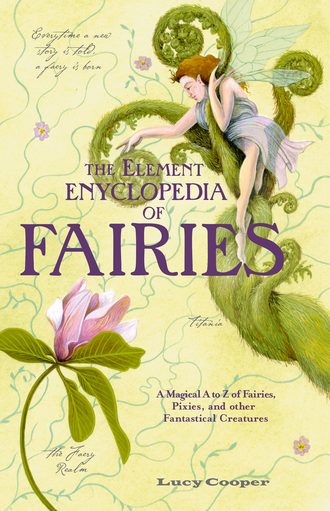
Полная версия
THE ELEMENT ENCYCLOPEDIA OF FAIRIES: An A-Z of Fairies, Pixies, and other Fantastical Creatures
Ancient fossilized bones found by anthropologists and shown to Aborigine elders in the nineteenth century were instantly identified by them as bunyip bones, and drawings and cave paintings exist depicting the many fantastical embodiments of the bunyip.
Bushyasta
A daeva (demon) in Zoroastrian texts, a spirit of indolence and lethargy, who attempts to thwart the good energy of mortals by exhorting them to sleep away their lives.
Buttery Spirits
The fattest fairies, found in inns and taverns where the landlord is deceiving his customers by using inferior meat and watered-down beer. The only food the insatiable buttery spirits devour is either stolen or dishonestly presented as fine fare; in this way the portly spirits inadvertently prevent the landlord from profiting from his duplicity.
Bwbach
See Bwbachod.
Bwbachod
Also known as the bwca or bwbach, the bwbachod is a Welsh household spirit that belongs to the same family as the brownie.
The bwbachod rewards tidiness. To enlist the help of one, traditionally Welsh maids would sweep the kitchen, set a good fire last thing at night, leave the churn filled with cream on the whitened hearth, and leave a basin of fresh cream on the hob. In the morning, if she was in luck, she would find that the bwbachod had emptied the basin of cream and plied the churn-dasher so well that she had only to give a thump or two to bring out the butter in a great lump.
Bwbachod have a dislike of teetotallers and like to harass them. In British Goblins (1880), Wirt Sikes relates the story of a bwbachod who took an especial dislike to a preacher who was much fonder of his prayers than of good ale. Being in favor of people who sat around the hearth with a drink and a pipe, the bwbachod took to pestering the preacher, knocking the stool from beneath his elbows when he was praying, jangling the fire irons, or frightening him by grinning in at the window. He finally succeeded in frightening the preacher away by appearing as his double, which was considered to be an omen of death. The preacher mounted his horse the next day and rode away, looking back over his shoulder at the bwbachod, who was grinning from ear to ear.
Bwca
(Pronounced booka.) An industrious Welsh brownie, working at night on household tasks such as spinning, washing, and ironing in return for bread and milk. He is happy to work without being seen, or his name being known, but if he is spied on he will immediately depart, never to return.
See also Bwbachod.
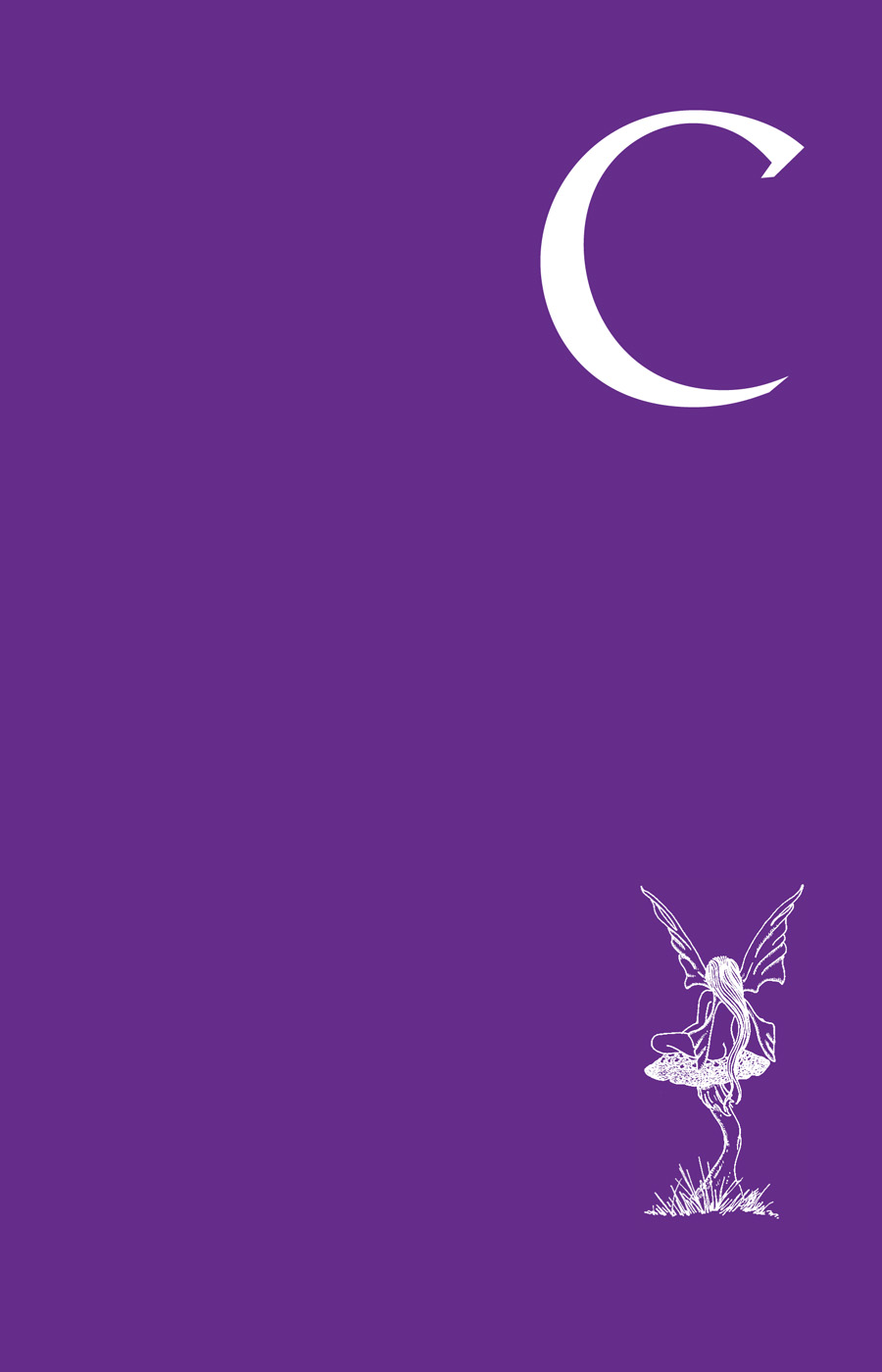
Cabyll Ushtey
A Manx water horse said to frequent the banks of lakes after dark. There is some debate as to whether it is as dangerous as its Scottish counterpart, the greedy each uisge, but it is believed to seize cattle and occasionally steal children.
A pale gray water colt was reportedly sighted at Ballure Green in the Isle of Man in 1859.
It is said Glen Meay, a small village on the west coast of the Isle of Man, is haunted by a man who rode a cabyll ushtey and was drowned at sea. His ghost is now said to roam the wooded glen beneath the waterfall.
Some say the cabyll ushtey is one guise of the shapeshifting glastyn.
See also Aughisky.
Caillagh ny Groamagh
Manx weather spirit. Caillagh ny groamagh means “old woman of gloominess.” On St. Bride’s Day, February 1st, the Manx Caillagh ny Groamagh appears as a giant bird carrying sticks in her beak. If it’s dry, she comes out to collect sticks to keep her warm through the summer. If it’s wet, she stays in and in it’s in her interest to make the summer warm and dry. Therefore, a dry St. Bride’s Day portends a wet summer to come, while a wet St. Bride’s Day is a sign of a fine summer ahead.
See also Cailleach Bera, Cailleach Bheur, Jimmy Squarefoot.
Cailleach Beara
See Cailleach Bera.
Cailleach Bera
(Pronounced kill-ogh vayra.) (Also Cailleach Beara.) Irish hag, similar to the Cailleach Bheur of Scotland. She lived in the mountains and carried stones in her apron for building. When her apron string broke, the stones fell out, creating rocky peaks and crags.
The Hag’s Chair and the megalithic tomb Slieve na Calliagh are situated on top of Hag’s Mountain, Sliabh na Caillí, at Loughcrew in County Meath.
See also Caillagh ny Groamagh.
Cailleach Bheur
(Pronounced cal’yach vare.) Blue Hag, a weather spirit of the Scottish Highlands. The Blue Hag is the personification of winter. She is the daughter of Grianan, the winter sun. In the old Celtic calendar there were two suns. The “big sun” shines from Beltane (May Day) to Samhain (Halloween). The “little sun” shines from Samhain to Beltane. The Cailleach Bheur is reborn each Samhain, when she smites the earth with her staff to fight off spring. When Beltane comes, she throws her staff under a holly tree or gorse bush and turns into a stone.
She is the guardian spirit of deer, which she herds, milks, and protects from hunters. She is a friend to wild cattle, swine, and wolves, and sometimes assumes the shape of a wild boar. She is also a guardian of wells and streams.
One story concerning the creation of Loch Awe in Scotland, recounts how, tired after a long day herding her deer, Cailleach Bheur fell asleep while watching over a well. The well overflowed and water poured down the mountains and flooded the valley below, forming first a river and then the loch.
Cait Sith
(Pronounced cait shee.) Fairy cat of the Scottish Highlands. Believed by some to be a witch transformed into a cat rather than a fairy, the cait sith is described in J. G. Campbell’s Superstitions of the Highlands and Islands of Scotland (1900) as being black with a white spot on its breast, the size of a dog. When angry, it arches its back and bristles its fur.
After a death, Scottish Highlanders would keep watch over the body to prevent the cait sith from coming near it. They believed that the fairy cat could steal the soul from a corpse by jumping over it before the burial. Games, riddles, music, and wrestling took place at the watches, called Feill Fadalach (Late Wakes), which were designed to distract the cait sith and protect the soul of the recently deceased.
Campbell, John Francis (1821–1885)
Author of one of the most famous collections of Scottish folk tales, John Francis Campbell was born in Edinburgh, but brought up on the island of Islay (Inner Hebrides). The island had belonged to his family since the eighteenth century; he was also known as Campbell of Islay. His upbringing was unusual in that he was allowed to mix with the local children. This was rather unconventional at a time when social etiquette required everyone to keep to a strict code of conduct and “know their place.” He said of his education:
As soon as I was out of the hands of nursemaids I was handed over to the care of a piper. His name was the same as mine, John Campbell, and from him I learned a good many useful arts. I learned to be hardy and healthy and I learned Gaelic; I learned to swim and to take care of myself, and to talk to everybody who chose to talk to me. My kilted nurse and I were always walking about in foul weather or fair, and every man, woman, and child in the place had something to say to us. Thus I made early acquaintance with a blind fiddler who could recite stories. I worked with the carpenters; I played shinty with all the boys about the farm; and so I got to know a good deal about the ways of the Highlanders by growing up as a Highlander myself.
He was educated at Eton and at Edinburgh University, where he studied geology and photography. He later invented an instrument to record sunshine hours that is still in use today.
His interest in local folk tales was rekindled when one of his close friends returned from Stockholm, having met Jakob Grimm there. He was persuaded to collect tales from the Highlands and islands of Scotland and trained a team of Gaelic speakers who collected 800 stories. His Popular Tales of the West Highlands, Orally Collected (in four volumes) was published between 1860 and 1862.
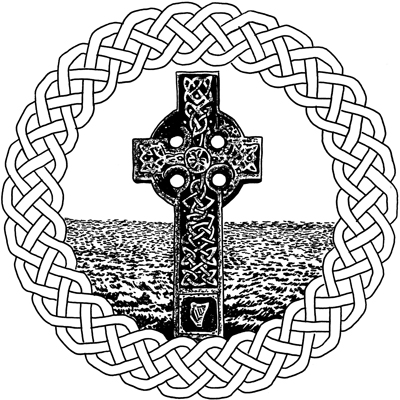
Campbell, John Gregorson (1836–1891)
A collector of tales and traditions from the Scottish Highlands, J. G. Campbell pursued the same method of collection as J. F. Campbell, recording tales directly from Gaelic speakers, which were later translated into English.
Campbell was born in Argyllshire, Scotland, and was first educated at the local school in Appin, where the family moved when he was three years old. His further schooling was in Glasgow, where he later attended the Andersonian University. While at university his passion for traditional tales grew and he met many storytellers and committed their tales to memory.
Campbell continued his studies and read law, but his inclination was toward the Church and he was licensed by the Presbytery of Glasgow in 1858. He continued to be a keen collector of stories. These were eventually compiled in Superstitions of the Highlands and Islands of Scotland and Witchcraft and Second Sight in the Highlands and Islands of Scotland and were published posthumously in 1900 and 1902 respectively.
Canotila
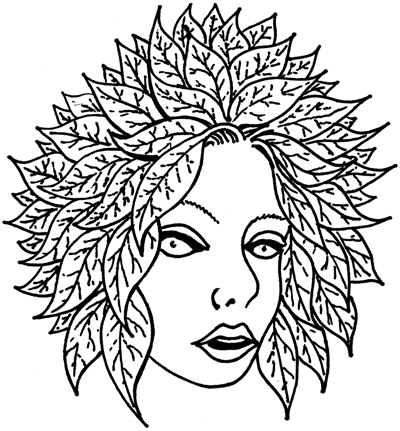
Native American tree spirits, literally meaning “they live in a tree.” From the mythology of the Lakota of North and South Dakota.
Caoineag
(Pronounced konyack.) Meaning “weeper,” caoineag is one of the names of the Scottish banshee. Her wail, heard in the darkness at a waterfall, heralds catastrophe for the clan. She is heard, but never seen. Unlike the bean nighe, she can’t be approached to grant wishes.
Caointeach
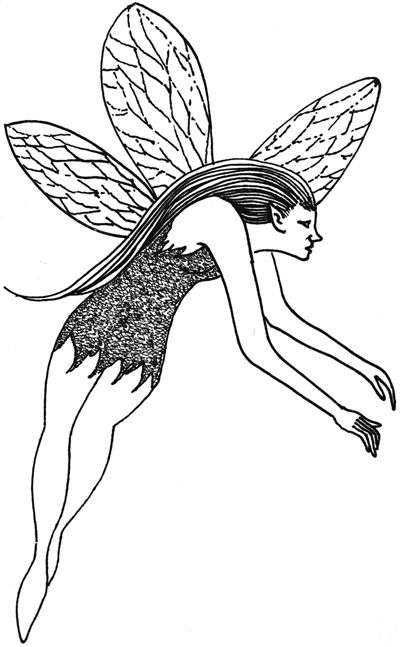
(Pronounced kondyuch.) Meaning “wailer,” the caointeach is another version of the caointeag, the Scottish banshee. She is local to Argyllshire, Skye, and the neighboring islands. She has a particularly lamentable and loud cry that rises almost to a scream. In appearance, she has been described as a very little woman or child wearing a high-crowned white hat, short green gown, and petticoat. She sometimes beats clothes on a rock, like the bean nighe.
James Macdougall and George Calder’s Folk Tales and Fairy Lore (1910) relates the story of the caointeach who followed the MacKay clan. When a death was going to take place, she would call at the sick person’s house with a green shawl around her shoulders and warn the family by wailing sadly outside his door. When the friends and family heard her lament, they lost all hope of the sick person getting better, for it was proof that the end was near.
The caointeach has ceased to give warning to the MacKays since one wet, cold, winter night, when she stood softly wailing outside a house and a member of the family took pity on her and offered her a plaid (blanket). She accepted the gift, but in the same way as when a brownie accepts a gift of clothes his spirit is “laid,” or set free, so too the caointeach has never come back to mourn for the MacKays.
Capelthwaite
In Westmorland, northwest England (now part of Cumbria), there was once a barn called Capelthwaite Barn, in which the Capelthwaite made its home. He was said to be able to assume any form at will, but his preferred shape was that of a black dog the size of a calf. He was friendly toward the owners of the barn, and helped them by rounding up their sheep and cows. However, when it came to strangers, he showed a mischievous and spiteful streak. In the end, the vicar of Beetham performed a ceremony and “laid” this supernatural black dog in the river Bela. It was not seen again, except for in one tale related in William Henderson’s Notes on the Folklore of the Northern Counties of England and the Borders (1866), when a man returning from the local fair somewhat disheveled, without his cap or coat, persisted in blaming the Capelthwaite for his misadventure, telling his wife that the Capelthwaite had chased him and thrown him into the hedge.
Carmichael, Alexander (1832–1912)
A writer, antiquarian, and folklorist, Alexander Carmichael was born on the island of Lismore, Inner Hebrides, Scotland. He attended local schools and later became a civil servant in various locations in Ireland and Scotland. It was while he was on the Isle of Skye that he became a collector of stories for J. F. Campbell.
The strict methodology that was Campbell’s approach did not suit Carmichael’s artistic temperament, but nonetheless he learned to take notes on everything that interested him. He left Scotland and lived in Cornwall for two years before taking up a post in the Uists (the central group of islands of the Outer Hebrides). Here he continued collecting ballads, hymns, anecdotes, incantations, poems, and songs. From 1873 some of his lore was printed in the newspaper the Highlander.
He went on to work in various locations in Scotland and retire to Edinburgh, by which time he was considered by many to be a pillar of the Gaelic intellectual community. He then embarked on a more ambitious work and compiled Carmina Gadelica (1900), a treasure trove of culture, lore, and traditions from various Gaelic-speaking regions of Scotland.
Cauld Lad of Hilton, The
A domestic spirit, half-brownie, half-ghost. His story is as follows. Long ago at Hilton Hall in Northumbria, there lived a contrary spirit called the Cauld Lad of Hilton. Some say he was the spirit of a stable boy who had been killed by one of the past Lords of Hilton. Now he could be heard at night clattering about in the kitchen after the servants had gone to bed, putting sugar in the salt cellar, upturning chamber pots and setting everything topsy-turvy. If the servants left him a bowl of cream or a cake spread with honey, he would clean and tidy. Sometimes he could be heard sadly singing, lamenting that the person who would “lay” him to rest, or exorcise his spirit, was yet to be born:
Woe’s me! woe’s me!
The acorn’s not yet
Fallen from the tree,
That’s to grow the wood,
That’s to make the cradle
That’s to rock the bairn,
That’s to grow to the man,
That’s to lay me.
Woe’s me! Woe’s me!
However, the servants knew that the way to lay a brownie was to pay for its services in non-perishable goods such as clothes. So they left out a green cloak and hood for the Cauld Lad of Hilton. He dressed in them at midnight and frisked about in them until dawn, singing:
Here’s a cloak and here’s a hood,
The Cauld Lad of Hilton shall do no more good!
As the sun rose, he vanished, never to be seen again.
Ceasg

(Pronounced keeask.) A Scottish mermaid. Half-woman, half-grilse (a young salmon), she is also known as maighdean na tuinne, “maiden of the wave.” Her top half is that of a beautiful woman, while below the waist she has the tail of grilse. She may grant three wishes to anyone who catches her.
There are stories of marriage between ceasgs and humans. The male offspring of these unions are said to grow up to be excellent sea captains.
Like most sea maidens, the ceasg is also believed to have a darker, dangerous side. This is described in a story in J. F. Campbell and George Henderson’s The Celtic Dragon Myth (1911), in which the hero is swallowed by a ceasg.
An idea common to tales from the Scottish Highlands is that of the separable soul. Ceasgs are believed to keep their souls separately from their bodies, hidden in an egg or in a box. To destroy a ceasg, one must find and destroy her soul.
Ceni
See Zemi.
Changeling
In fairy lore throughout Europe and other parts of the world one of the fairies’ favorite tricks was to steal a human child, or sometimes a nursing mother, and take them away to fairyland. They replaced the human either with one of their own kind, known as a changeling, or with a stock or fetch, a “doll” representing the stolen child or woman, which by means of fairy glamor was given the semblance of life. The stock or fetch could take the form of a piece of wood or a bundle of grass and sticks, fashioned in the likeness of the abducted human.
Fairy changelings were sometimes sick or weak fairy children whom the fairies placed in the care of a human family so that they might have a better chance of survival. At other times they were elderly fairies who were being given the opportunity to live out their old age in comfort, cosseted and doted on by their new “parents.”
Typically, changelings were described as sickly, wizened, or otherwise abnormal in appearance, either never gaining the power of speech or displaying unsettlingly advanced language skills. In many tales, they had insatiable appetites and cried constantly. Occasionally, there were tales of parents who treated the changeling kindly in the hope that their own child would likewise be cared for. More often, suspected changelings were subjected to cruel tests and ordeals in an attempt to drive away the fairy and secure the return of the healthy human child. In many tales, these included dunkings in holy wells, beatings, or leaving the supposed changeling unattended in the woods, on a hillside, beneath a church stile, on a manure pile, or in an otherwise inhospitable environment. Sadly, many human children born with physical abnormalities or wasting diseases or who otherwise did not fit the norm endured sometimes fatal cruelties at the hands of parents and communities who labeled them as changelings.
Various reasons are given as to why fairies coveted human babies, ranging from the sinister to the benign. At the darker end of the spectrum, it was said that fairies had to pay a tithe or tribute to hell (as in the ballad of Tam Lin) and rather than spill fairy blood, they paid in the blood of humans. Alternatively, humans were taken to fairyland as slaves and put to work as servants or smiths. Beautiful golden-haired children were most prized by the fairies. Some said that they were sought after to improve the fairy stock; others simply that fairies thought these fair-haired children were particularly attractive and doted upon them like pets.
Nursing mothers were frequently sought to suckle fairy offspring. According to some tales, it seems that fairies wanted human milk to give their fairy children a human soul. An account in R. H. Cromek’s Remains of Galloway and Nithsdale Song (1812) relates the case of a nursing mother who was blessed and rewarded by a fairy for allowing her child to feed on human milk.
Various methods were employed to trick a changeling into revealing its identity. In many tales across Europe it is the mother’s unusual use of eggshells that compels the changeling to give itself away. In a German tale the mother cracks an egg in half and sets it on the stove to boil, forcing the changeling to exclaim from the cradle, “Well, I am as old as the Westerwald, but I’ve never seen anyone cooking with an eggshell!” As the changeling laughs, it shoots up the chimney and the human child is restored to the cradle.
Many Celtic changeling tales involve the “brewery of eggshell,” in which eggshells are set upon the hearth on the pretext of brewing beer in them. This strange behavior prompts the changeling to pass comment, uttering words to the effect: “I remember seeing an acorn having an oak, and I remember seeing a hen having an egg, but I don’t remember seeing anybody brew beer in the shell of a hen’s egg.”
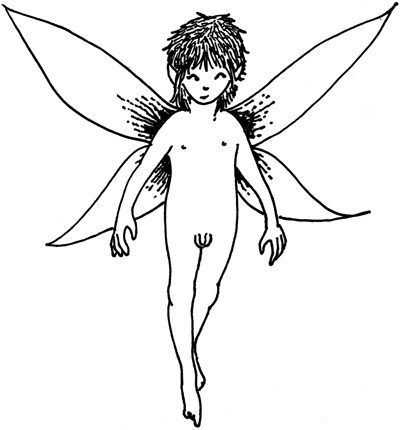
Variations on this theme include an Icelandic tale in which a woman constructs a spoon handle out of twigs that is so long it pokes out of the top of the chimney, and a Danish tale in which the mother makes black pudding using an entire pig. This prompts the changeling to remark, “A pudding with hide! And a pudding with hair! A pudding with eyes! And a pudding with bones in it! Thrice have I seen a young wood spring upon Tiis Lake, but never yet have I seen such a pudding! The Devil will stay no longer!” It runs away, never to return.
In other tales, it is an old fairy changeling’s desire for music, merriment, and dancing that gives it away. There are many Celtic tales in which a traveling tailor plays an integral role in unmasking the changeling. Typically, the father goes out to work and the mother goes out on an errand, leaving the tailor to watch the “baby” as he works. When the two of them are left alone, the tailor begins to whistle as he stitches, at which the creature in the cradle jumps up with a glint in its beady eyes and demands that the astonished tailor strikes up a tune on the fiddle or pipes so that it might dance. In some versions it is the changeling itself who takes up an instrument and plays a lively tune, sometimes insisting on a dram of whisky to accompany the revels. When the parents return, the little creature returns to the crib, where it resumes its crying and wailing. The tailor informs the parents of their child’s true identity and they drive out the changeling by building a blazing fire and placing it upon it so that it is sent up the chimney and the true human baby returned in its place.




